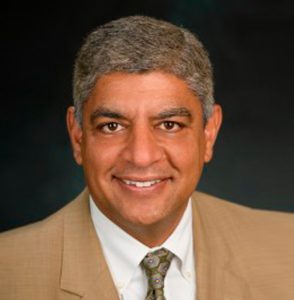Research Reports
Joint All-Domain Command and Control (JADC2)
PUBLIC RELEASE
December 2022
COMPLETED
November 2022
AUTHOR: Dr. Roshi Rose Nilchiani
STEVENS INSTITUTE OF TECHNOLOGY
Joint All-Domain Command and Control (JADC2) is an enormous effort in information sharing—sense, make sense, and act—to empower joint force commanders in warfighting. This effort will take advantage of materiel and non-materiel solutions as well as modifying existing policies, authorities, organizational constructs, and operational procedures. The goal of JADC2 is to empower the U.S. military to join forces to seize, maintain, protect, gain information and knowledge, and maintain decision advantage and superiority. The capabilities and strength of JADC2 include but are not limited to: Unity of efforts in capability development, resilient System-of-Systems in degraded environment, shared intelligence in secure and agile manner between forces, connected interoperable network of sensors of C2 that operate in cloud-like environment, and is scalable according to future needs and demands. There are several challenges and questions raised by experts in the DoD including but not limited to: the need for portfolio management of JADC2- related efforts, the decision-making authority structure within JADC2, affordability and specific budget allocation, and technical maturity of the proposed technologies as well as optimal technical system design and lifecycle management.
This report looks at JADC2 through an academic/scientific lens with the goal of identifying multiple opportunities in which academic institutions in various domains (engineering, sciences, and social sciences) can contribute to create a state-of-the-art, Joint All-Domain Command and Control system. After a brief overview of current state of jointness, five opportunities are identified that can be led by universities and research centers to solve and advance the technical and organizational challenges of JADC2. The suggested opportunities are summarized as follows:
- Opportunity 1: Create novel, culturally centered, interoperable collaborative mechanisms between forces. The goal is to create the best collaboration architecture for JADC2 between Air Force, Army, Navy, Marine Corp, Space Force, and other department of defense services.
- Opportunity 2: Need for innovation in decision analysis and game theory (modified based on adversaries’ socio-cultural nuances). The current game theory application is limited to rational and consistent actors and DoD often faces adversaries that act partially rational/or irrational and may have limited consistency in their behavior.
- Opportunity 3: Need for complexity management of the growing network of interconnected sensors, decision makers, and shooters. As the legacy system of sensor networks from all forces becomes connected, the risk of excess network complexity rises which can lead to fragility and vulnerability of the interconnected networks. There is an essential need for a resilient and flexible network solution and optimal system architectures and designs that can connect legacy networks with minimal or even reduced complexity and provide added security layer. The author suggests a Universal Translator network concept of hardware and software to connect all existing and future heterogeneous network of sensors and assets of DoD, which will empower rearranging, reorganizing, expanding, and infusing the latest advances in technologies as they become available.
- Opportunity 4: Need for a novel, strong portfolio management framework of JADC2 Acquisition Programs (to manage, optimize, integrate, and fund JADC2-related projects and acquisition programs). JADC2 consists of multiple acquisition programs in software, hardware and organizational level that are infused with current legacy and existing systems asynchronously which require a high-level portfolio management to orchestrate multiple projects and tasks over JADC2 lifecycle.
- Opportunity 5: Need for Model Based Systems Engineering (MBSE) for JADC2 as a SoS in domains of materiel, non-materiel, policies, authorities, organizational constructs, and operational procedures.






